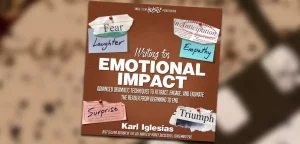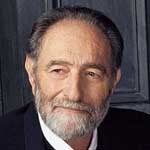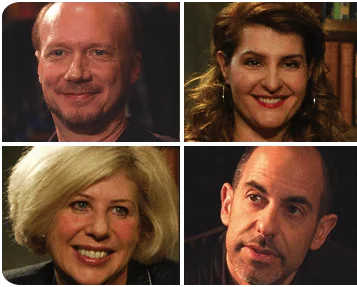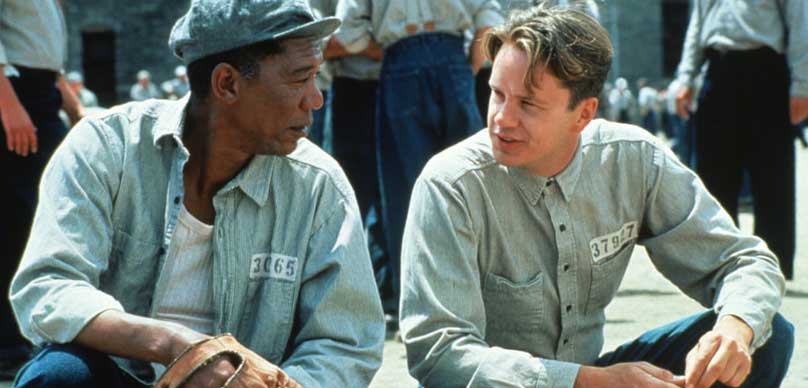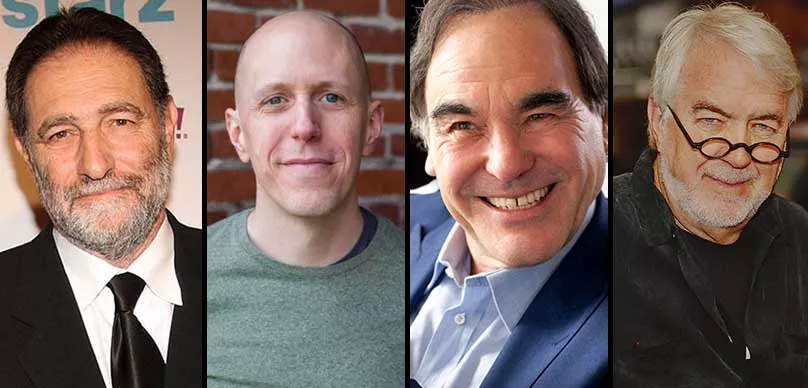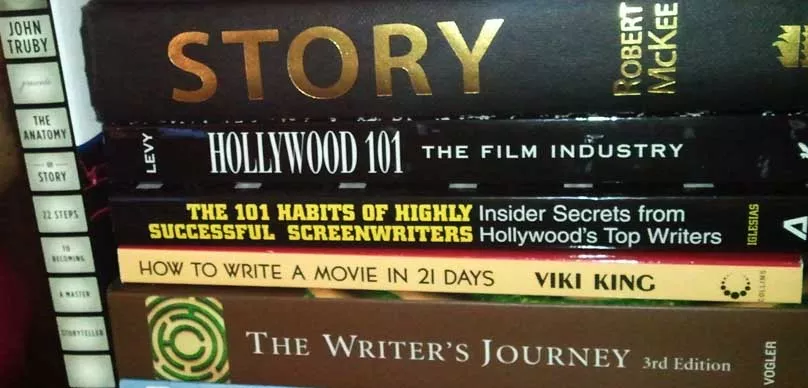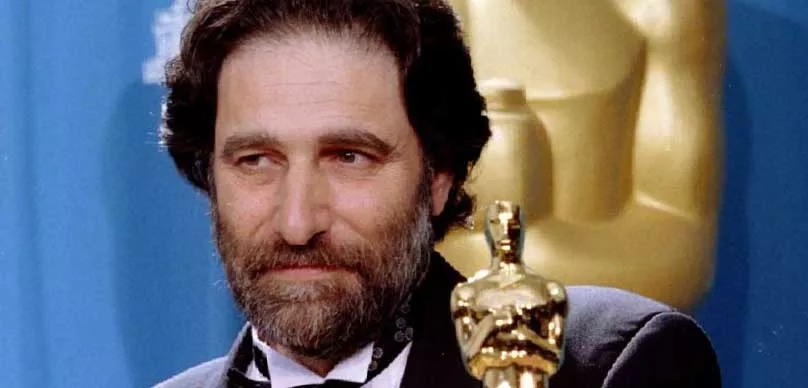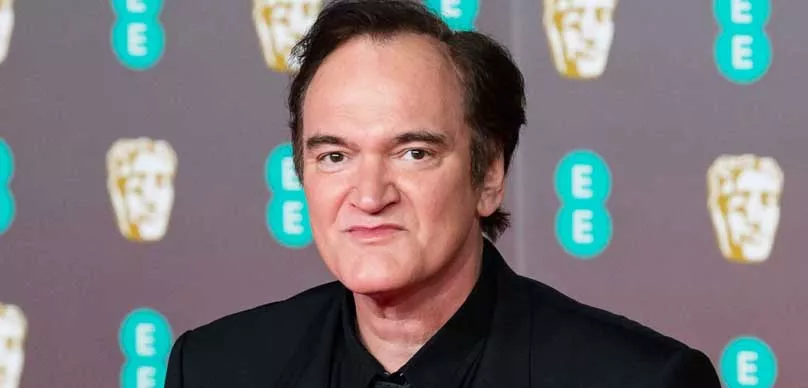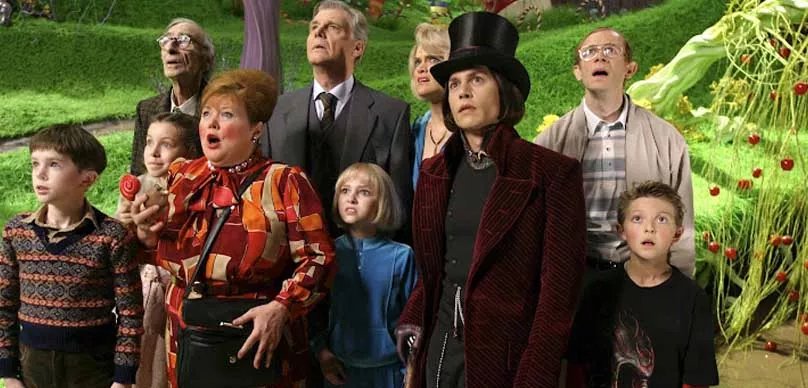In this episode, you get a FREE PREVIEW of the IFH Books release of Writing for Emotional Impact: Advanced Dramatic Techniques to Attract, Engage, and Fascinate the Reader from Beginning to End by Karl Iglesias. Enjoy!
When reading a story, there are three kinds of feelings: boredom, interest, and wow! To become a successful writer, you must create the wow feeling on as many pages as possible, which requires writing that engages the reader emotionally.
In his best-selling book, screenwriter Karl Iglesias explored the working habits of A-list Hollywood scribes. Now, he breaks new ground by focusing on the psychology of the reader.
Based on his acclaimed classes at UCLA Extension, Writing for Emotional Impact goes beyond the basics and argues that Hollywood is in the emotion-delivery business, selling emotional experiences packaged in movies and TV shows.
Karl not only encourages you to deliver emotional impact on as many pages as possible, he shows you how, offering you hundreds of dramatic techniques to take your writing to the professional level.
In this audiobook, you will learn:
- Over 40 techniques to humanize a character for instant empathy
- The seven essential storytelling emotions
- Over 70 techniques to create them
- Over 50 ways to craft powerful scenes, including the emotional palette
- Over 30 techniques to shape your words and energize your narrative description
- The most common dialogue flaws and fixes for each
- Over 60 techniques to craft dynamic dialogue that snaps, crackles, and pops off the page
Not only does Karl Iglesias “get” emotion, but he also shares insider secrets for moving the reader from tears to laughter and everywhere in between.
Alex Ferrari 2:12
Well guys, today you are in for a treat. I am bringing to you a another audio book preview from IFH books. Now the author of this book is Karl Iglesias, who is a author story guru, and been a guest on the show many times actually is one of the most popular guests that's ever been on the Bulletproof Screenwriting Podcast, and Karl and I got together to release the audio book version, which is basically a seminar based on his best selling seminal work in story called Writing for Emotional Impact. Now you're gonna get a little bit of a taste of what this book is. And if you want a free audiobook copy of Writing for Emotional Impact by Karl Iglesias, all you have to do is go to freefilmbook.com And subscribe to a free account on Audible. When you do that. You get one free book and you just go to go pick up that book. And there you go. Now you could do that or you could just pick it up on Audible if you already have an account and and pick it up that way. But it is a great, great, great book. And I'm so excited to be sharing this with you guys. So without any further ado, enjoy your free preview of Writing for Emotional Impact by Karl Iglesias.
Bulletproof Screenwriting and IFH books presents Writing for Emotional Impact, advanced dramatic techniques to attract engage and fascinate the reader from beginning to end by Karl Iglesias performed by Karl Iglesias
Introduction. It's not about plot points. It's not about act structure. It's not about character. It's all about emotion. There are three kinds of feelings when you read a story, boredom, interest, and wow. To become a successful screenwriter, you must create that wow feeling on as many pages as possible. And this requires writing that engages the reader emotionally. In his best selling book 101 Habits of Highly Successful screenwriters, screenwriter Karl Iglesias explored the working habits of a list Hollywood scribes. Now he breaks new ground by focusing on the psychology of the reader based on his acclaimed classes at the UCLA Extension. Writing for emotional impact goes beyond the basics, and argues that Hollywood is in the emotion delivery business selling emotional experiences packaged in movies and TV shows. Karl not only encourages you to deliver emotional impact on as many pages as possible. He shows you how offering you Hundreds of dramatic techniques to take your writing to the professional level. What you're about to listen to, is the screenwriting masterclass that inspired Karl to write the book Writing for Emotional Impact. Everything in the book is based on this seminar. But this seminar goes a little bit deeper than the book does. So you are in for a treat. I personally read this book early on in my screenwriting career, and I can't tell you what an impact no pun intended, it had on my life as a storyteller, and specifically as a screenwriter, getting my screenplays read and optioned by major Hollywood producers. I am so proud to present Writing for Emotional Impact as the first of many books in the bulletproof screenwriting audio book series, sit back and enjoy. Alex Ferrari, writer, director, producer podcaster, author, public speaker, and founder of Indie Film, Hustle, Filmtrepreneur, and Bulletproof Screenwriting.
Karl Iglesias 6:04
Thank you very much. And welcome to this seminar on dialogue. When we talk about crafting fresh dialogue for emotional impact. We're presenting lots and lots and lots of techniques, along with script examples to give you a set of tools that you can use to go over your dialogue and and make it that much fresher and sharper, and just make it like crackle, pop and pop off the page. So my name is Carly glaces. I'm the author of the one on one Habits of Highly Successful screenwriters, and the upcoming writing for emotional impact, which is all about the craft. Okay, without further ado, let's dive into what we're going to what are we going to be talking about today? What dialogue must accomplish in the script, the most common dialogue problems and how to fix them? What constitutes great dialogue. And I've actually separated into four categories emotional impact, individuality, meaning how to write individual dialogue, unique voices to separate your characters. One of the most important things how to provide information through your dialogue in a subtle way. Because what I see a lot in scripts, amateur scripts, is just plain old on the nose, really boring, an obvious exposition. And lastly, we're going to talk a little bit a little bit about subtext, which actually will be covered in depth in the next seminar, the psychology of subjects. So I'll talk a little bit about it, but I won't give you actual techniques that will be the next seminar. And you will have a lot of homework after this seminar because I will tell you give you a list of the dialogue masters that you have to read. Okay, one of the best ways to learn how to write is to read scripts, rather than going to the movies, because you can actually see how the other writer writes on the page and how we evokes an emotion in the reader. Whereas in the movie theaters, you're experiencing the emotions, from the craft of about 200 craftsman, the music, the cinematography, the editing, so there's no way to find out how to do it on the page. So the only way to do it is to through reading the scripts. And I'll tell you which writers are considered great dialogue masters for you to study. Okay, so let's start with what dialogue must accomplish. Most of the books and seminars, unfortunately, dialog tend to be glossed over. And the reason for that is that most people believe that data cannot be taught in a sense. And there's a little bit of truth to that people thinking I've ever an ear, just like a musician. You know, Downton has a good ear, that one must accomplish several things. What you read is that it must advance the plot, right? It must events provide exposition, and reveal character. This is usually the two things that teachers teach. But as you'll see right now, it actually has to accomplish a lot of different things too. And I'll go through each one carefully. The very first thing is reveal character. That's an obvious what a character says and how he says it or she says it reveals their character, it must reflect the speaker's mood, and emotions. It must also reveal or hide the speaker's motivation. The most common one is advance the action and carry information or exposition. And this is what I see in about 99% of amateur scripts. Most of the dialogue is a straight information. It should foreshadow what's to come. And of course, it should have emotional impact. And by that I mean that the dialogue should be funny, tense, you know, etc, etc. This is what great dialogue does, it provides emotional impact. So what I'm going to do is actually talk about some of the most common dialogue problems that I see in amateur scripts. And we'll talk about also how to fix them. Okay. And this will be in order meaning from the least common to the most common
So what I see a lot is what we call stilted or formal dialogue. And stilted means that it's very literary, it's grammatically correct. Another thing you see a lot is that dialects are hard to read. A lot of amateur writers create a character that's from a particular region or country and actually write and actually phonetically spell the dialect, so that when you when you read it, you technically hear it. It's good to certain point, but what I see a lot is that there, it's really hard to read, and that takes you out of the reading, you try to figure out what is he saying, okay, and I'll show you a way of how to fix that. So Dalits are to read, try to avoid, try to avoid that characters talk too much. In other words, you see a lot of huge chunks of dialogue, in scenes, characters all talk the same, this is a very, very common thing. And usually the voice is the writers, obviously, you know, it's every chunk of dialogue, you see, every character speaks the same way. And one of the ways to, one of the standards you should shoot for is to actually hide the characters names in your script, once you print it out, like the first draft, hide it and then read the dialogue. And you should be able to know who's speaking just from the dialogue customer, that's your standard. Dialogue is predictable. You see this a lot in bad television, and even good television sometimes actually see that. And this is when you're able to predict what the next response will be to dialogue. You know, if somebody says I love you, the most common response I was all the time I love you to write. And your job as a screenwriter is to write unpredictable dialogue. Dialogue is wooden, flat and bland. And this usually occurs through the exposition when you see exposition, and this is, you know, straight information. It's also flat, it's bland, it's boring. Dialogue is to expose a story. And the reason for that is because the writer doesn't know how to write, provide exposition in a subtle way. And then, of course, who can predict what the last and biggest problem is? Dialogue is on the nose, the most common problem. And under nose means that the dialogue has exactly what a character is thinking, what the character wants. character's motivation, desires, it's just on the nose when it's exactly what they're thinking and want to say. And the reason is boring. I'll talk about it in a second. I shall talk about it in subtext seminar, because that will be the bulk of this of this problem. Okay, so what constitutes great dialogue, emotional impact, individuality, meaning each character has their own voice, subtle exposition, and then subtext. Okay, so I'm gonna start now with the very first category, emotional impact. And what I'll do is actually give you the technique, and I'll show you examples from scripts, okay? And you'll be able to see it in action from great scripts, so cliche alternatives as your very first technique. And as the title implies, it just means turning nucleus taking cliches, cliche lines, as you've heard and turning them to your advantage meaning use an alternative to that okay. And let me show an example. This is from Lethal Weapon by Shane Black. Oh, by the way, guy who shot me Yeah, same dose shot Lloyd Jesus. You sure? I never forget an asshole. Okay, now what would have been the cliche there? The cliche would have been I never forget to face right that's a line you've heard 100 times shame black to deadline. It's a cliche and just tweak tweaked it just a bit. And made I never forget an s&m it that made it funny. All right. So that's one example. This is an example from body heat by Lawrence Kasdan. This is a scene where received played by William Hurt and Maddie played by kissing Turner are in the bar. And obviously they're attracted to each other. Most men are a little boys. Maybe you should drink at home. Too quiet. Maybe you shouldn't dress like that. This is a blouse and a skirt. I don't know what you're talking about. You shouldn't wear that body. Okay, great line. What would have been the cliche line there? You shouldn't wear that dress. Okay, in this case, you just tweaked a little bit. You shouldn't wear that body and just raise it to another level. So that's an alternative to a cliche. Let me give you another example is from 48 hours. I love this example.
Crazy. Oh, you guys were in like last week. You better ask around. I'm not supposed to be hassled I got friends. Hey, Park the tongue for a second suite bands. We just want to search the room. Okay, where's the well What would have been the cliche, this isn't the second response that from vents on Twitter said, Hey, shut up, or Hey, quiet. That would have been a cliche, right? But he said, park the tongue for a second. Okay, a little witty alternative. So that's three examples for a cliche alternative. Let me give you another technique. That's called the combat Zinger. This is pretty self explanatory. Now, everybody knows what a zinger is. Right? So it's a quick way to come back. That's usually supposed to attack a person. This is very common in buddy films, right? Like 48 hours rush hour, one person sets up the line, the other person just comes back with a zinger just back and forth. And I think in Saturday Night Live too they had they have a character who's like, Mr. Zinger, right and the whole thing so you understand the concept. So let me give some examples of combat zingers. This is also from 48 hours. We in brothers, we ain't partners and we ain't friends. And if Dan's gets away with my money, you're gonna be sorry, you ever met me? I'm already Sorry. Okay, so it's a little Zinger there. From aliens. One of the lines that got the biggest laughs laughs in the movie. Vasquez is a is the woman Marine, right? Hudson Hey Vasquez Have you been mistaken for a man? No Have you Okay, come back so you hear this from All About Eve great strip by the way to study because it's got like hundreds and hundreds of really witty lines and comebacks from Mankiewicz. Bill is it sabotaged as my career nothing to you have you know human consideration? Show me a human and I might have Okay, so Margo is insulting. All right. Exaggeration is your another set of techniques. And this is a great device to amuse the reader. Now exaggerations are not meant to be taking literally okay, you exaggerate something so they're supposed to be taking metaphorically and I want to show you examples. You'll see what I'm talking about. This from Annie Hall, Woody Allen. After he parks the car. Don't worry, we can walk to the curb from here. Okay, remember she parked the car a little far. Okay, that's an exaggeration. And then later on, there's another line where it says Honey, there's a spider in your bathroom the size of a Buicks. Okay, that's an exaggeration. Obviously, there's a spider is not the size of the Buick, but just the line itself. Metaphorically, it just sounds great. Okay, so exaggeration. Another example. This is from the Gilmore Girls. No, I don't watch that show. But I I've seen a couple episodes. And it's incredibly witty is like the lines just go like that. So it's a great script. I actually read a couple of scripts and it has been going oh my god, this is really great, great dialogue. My parents set me up with a son of a business associate. He's going to be a doctor, how old is he? 16. So he's going to be a doctor in 100 years. My parents like to plan ahead. Okay, so the exaggeration there is gonna be a doctor in like 100 years, okay. And from as good as it gets, Carol, an ear infection can send us to the emergency room maybe five, six times a month, where I get whatever nine year old they just made a doctor nice chatting with you. Okay, you see the with exaggeration here is the nine year old doctor, whatever nine year old, they made a doctor. So it just raises your dial up to my level when you use that particular technique. All right, call me comparison is another technique. Now this is about humor. It's a humor technique, actually. And a lot of people think, well, you need to be funny. I agree. Okay, you need to actually be funny to come up with funny lines. But if you really study humor, you come up with actually the code the sides. So universally, humor is a science in a sense, you know, probably more science than art. And if you really study this is one technique, which is the most common techniques in humor, which is to compare two things that creates the laughter and I'll show you an example. So this is technical comic comparison. Nice to meet you. Oh, and who might this be? This is Eddie. This is the dog. I call him Eddie spaghetti. Oh, he likes pasta. No, he has words. Okay. So that that laugh was generated because he's actually comparing it with spaghetti pasta and comparing it with worms. Okay, here's another example. This is from Notting Hill. Ah, there's something wrong with this yogurt. It's mayonnaise. Oh, okay. Remember that? That scene? Okay. It's comparing, you know, yogurt with mayonnaise.
Okay, next one is from Monty Hall. It's so clean out here. That's because they don't throw their garbage away to turn into television. And okay, we're talking about Los Angeles. You remember that is a great script to read to, obviously this Picture Academy Award. So obviously compared TV with garbage in this case. So common comparison. All right, moving on. Something called lists. This is very self explanatory. This is about using specific lists for dramatic effect, which can include usually, this is used a lot to show a character's frustration. Just feels a little secret there. Let me show you some examples. This is gonna be hard to read because a lot of it but this is the scene in Erin Brockovich where the love interest is introduced, and Isa is asking for her number. And she says, which number do you want? George? You got more than one? Shit? Yeah, I got numbers coming out of my ear. Like for instance, 1010. Sure, that's one of my numbers. is how many months old? My little girl is you got a little girl. Yeah, sexy, huh? And here's another five. That's how old my other daughter is. Seven is my son's age two is how many times I've been married and divorce you getting all this? 16 is the number of dollars in my bank account. 4543943 is my phone number. And with all the numbers I gave you, I'm guessing zero is the number of times you're gonna call it. Okay. So there's the list right there. So giving him a list of numbers. And this is really, really well done. Give me another example. Numbers some something's got to give with Jack Nicholson and Diane Keaton. Can we talk tomorrow? What for? I saw your friend you were having dinner with is that what is that what you want? It's never going to work with me. Look at me. I'm, I'm a middle aged woman. Don't let this brown hair fool you. I don't have real brown hair on my head. I'm almost all gray. That would freak you out, wouldn't it? And I have high cholesterol and my back hurts every morning and I'm postmenopausal and I have osteoporosis and I'm sure arthritis is just around the corner. And I know you've seen my varicose veins let's face it, man, that's not quite the buzz you're looking for. All right, a list of all her little ailments. Now actually, this illustrates a good point because you know you have a lot of teachers that tell you to not have huge chunks of dialogue right? Tell you only one or two liners, but this works because it's using one of the techniques or this particular chunk of dialogue has emotional impact. And the secret here is that when you have emotional impact, it doesn't matter how long your your speech is. Okay? The reader is not thinking oh, this is too long. This is amateur because he's really impacted by that speech. Okay, another example this from be dazzled. Not a good film, but the script was okay. The original is even better by the way. The devil there's nothing sinister here paragraph one states that either devil and nonprofit or corporation with offices in purgatory hell in Los Angeles will give you seven wish wishes to use as you as you see fit. Why seven? Why not? Eight? Why not? Six? I don't know seven. Sounds right. It's a magical mystical thing. Seven Days of the Week Seven Deadly Sins seven ops seven dwarfs, okay. Okay, so there's the list right there at the bottom. It also creates a nice rhythm to it, which is really important in in dialogue. All right, one of my favorite techniques is metaphors and similes. Now, I think they spoke about metaphors and similes into description when you use descriptions. This is for dialog. Jenna metaphor for those. Those of you who don't know is when you compare something you say this particular thing is something else. Like, you know, you try to describe somebody, sneaky guy and you say he's a snake. Okay, that's a metaphor, but if you say he is like a snake, that's a simile. So let me give you some examples of this from Bull Durham. Another excellent script. Is somebody going to go to bed with somebody or what your regular nuclear meltdown honey slow down. Okay. So the very first one there your your conscious comparing to a nuclear meltdown, your regular nuclear meltdown, that's a metaphor. And then later on, crush this guy hit the shit out of that one, huh? Well, I held it like an egg. And he scrambled the son of a bitch. I mean, fun yet. Okay. This is after he told him you have to hold the ball like an egg when you pitch it. The guy doesn't think I pitch the ball and he slams it like a hole for a homerun and he's trying to figure out so I held it like an egg is the simile and then he scrambled a son of a bitch. Right? Instead of saying he hit the homerun which would have been on the nose. He says he scrambled the son of a bitch. That's really interesting. Metaphor. And then of course All About Eve which has hundreds of them.
There's a sudden Sharpie out from the bathroom. You're supposed to zip the zipper not me like trying to zip a pretzel standstill. Bill grins To what a documentary those two would make, like the Mongoose and the Cobra. Okay. So just in that little three lines you have like to write, zipper pretzel, and like a mongoose and the Cobra and from Casa Blanca, another great script that has a lot of metaphors, similes, and just all around great dialogue. My interest is whether Victor Laszlo stays or goes, is purely a sporting one. In this case, you have no sympathy for the fox, not particularly, I understand the point of view of the Hound to Okay, so you're comparing what's going on, you know, the Nazis after Victor Laszlo, like a fox hunt. And this is the reason when, you know, obviously, when you don't know the all these techniques, basically, when you read the script, you're going wow, this this is also conscious reading that you're going wow, this is great writing. You're not stopping on this is it? But as a writer, you have to notice this as a writer when you have mastery of the craft. This is what we're talking about. Okay. Really funny one from Austin Powers, The Spy Who Shagged Me Dr. Evil, you're not quite evil enough. You're semi evil, you're quasi evil. You're the margarine of evil. You're the Diet Coke of evil, just one calorie not evil enough. Okay. This can also be also like lists too, because he's going through the whole list of them, but obviously a lot of metaphors there. Okay. Another great technique is called parallel construction. Now this is to create rhythm and dialogue. A lot of politician use that in speeches, by the way, the parallel construction. And like, for example, Martin Luther King, I have a dream you keep repeating of a dream. Jeff Kay's line, a famous line asked, not what the country can do for you ask what you can do for your country. That's a parallel construction. And we'll show you some examples of that. This is from Rocky. Look, Bob, if you want to dance, you got to pay the band. If you borrow, you got to pay them in me I get emotionally involved. Okay, so the parallel construction is this the first line if you want to dance, you got to do this. If you borrow, you have to do that. Okay, so it's, it's the same construction as the first line, and it just creates a nice rhythm. Let me give you another example. From Apocalypse Now. shirts. We must kill them. We must incinerate them pig after pigs cow after cow village after village army after army. So you see a whole bunch of them. You see how they're all constructed the same way parallel construction. And then from the Gilmore Girls again. Oh grandpa as the insurance biz, people die. We pay people crash cars we pay people lose the food we pay. All right. Another technique progressive dialog. Now as the name implies, this means it's dialogue that actually progresses either upwardly or downwardly. And I'll show you an example what I mean by that. This from Monty Python, flying circus. This is sketch the interview is interviewing a camel spotter. So in three years you spotted no camels? Yes, in three years. I tell a lie for be fair five. I've been camo spotting for just the seven years. Before that, of course, I was a yeti spotter. A Yeti spotter? That must have been interesting. You've seen one, you've seen them all. And have you seen them all? Well, I've seen one. Well, a little one. A picture of I've heard of them. Okay, so actually this liquid exam because you have both you have the upward progression where he's talking about the years, right? I've seen him in three years on or four. I've seen seven years, right. So that creates an effect that's progressively up. And then the last line is progressively down. I've seen one. I've seen a picture. You know, I've heard of him. Okay, so that creates a nice effect. This is another example from almost famous Cameron Crowe script. Penny Lane. How old are you? 18 Me too. How old? Are we really? 17 Me too. Actually. I'm 16 Me too. Isn't it funny? The truth just sounds different. I'm 15 right? Remember that scene. So this here we have a downward progression. creates a really nice exchange, and then a famous one from Glengarry Glen Ross, David Mamet. Blake, we're adding a little something to this month's sales contest. As you all know, first prize is a Cadillac Eldorado. Anyone wants the second prize. Second prize is a set of steak knives, third prices, you're fired. Okay, so obviously another upward progression here. Okay, this is one of my favorite favorite favorites. techniques are called push button dialog. Now as the name implies, eyes. This is dialogue that pushes someone else's buttons.
And causes an emotional reaction. Now, it doesn't have to be a nasty thing like you're trying to insult them, they'll be like a combat Zinger. It could be also you want to make them like you want them to love you. So, you know, you also would say a line, and I'll show examples of that too. But if you if you think about your most famous of like, favorite favorite lines of dialogue in the history of movies, okay, there, chances are like seven out of 10 of them are push button dialog techniques. Okay? They're really really effective. So famous lines, like, you know, frankly, my dear, I don't give a damn. That's a push button dialog. You're not too smart. Are you? I like that in a man. That's that's from body heat. And okay, let me give some examples of this from real genius. Oh, you're the new starter? Are you? Or is it dud? How do you mean start hotshot brain? Your 12 year old right? I'm 15. Does you probably know that. Okay, He's insulting his intelligence push button. Right? They're as good as it gets as a couple of them there. Oh, come on. Come on in and try not to ruin everything by being you. All right. And then later on, Carol, when you first came into breakfast, when I saw you I thought you were handsome. Then of course you spoke and other push button. And now there's a great line from Silence of the Lambs. laughter Why do you think he removes their skins agent Starling thrilled me with your acumen. It excites him. Most serial killers keep some sort of trophies from their victims. I didn't know you ate yours. Okay, cool. Push, push his buttons there. And vice versa. Actually, one of the most most memorable scenes is when both people are pushing their buttons back and forth, you know. From another example, from something's gotta give, wow, it's the perfect beach house. I know, my mother doesn't know how to do things that aren't perfect, which explains you. Okay. So in this case, that's, you know, he's actually giving her a compliment, right? So it's pushing her romance buttons there. So it doesn't all have to be negative. Okay, and this is kind of a little long, but this is the famous body heat scene. I'm a married woman, meaning what? Meaning I'm not looking for a company she chose back towards the ocean, then you should have said I'm a happily married woman. That's my business. What? How happy I am. And how happy is that? You're not too smart. Are you? I like that in a man. All right, famous line from body heat. All right. Let's do one of three more techniques under that category. This is reversals. And this is when, as the name implies, a reversal is when a character takes the opposite turn in the middle of a thought. All right, let me give some examples of that reversals as good as it gets. You want to dance I've been thinking about for a while. And Carol rises and no. Okay. You see the reversal there? That creates humor. When Harry Met Sally. I've been doing a lot of thinking and the thing is, I love you what? I love you. How do you expect me to respond to this? How about you love me too? How about I'm leaving. Okay, so you got a reversal? And actually, this is also an example of another technique you just saw. How about you love me to hop on? I'm leaving parallel construction right? From Butch Cassidy and the Sundance Kid William Goldman's famous script. I think we lost them. Do you think we lost them? No, neither do I. Okay, it's a very simple right very simple reversal. Creates creates an emotional impact right there. Okay. Another technique you have at your disposal is understatement. And this is the opposite of exaggeration, right? Remember, you had exaggeration in your toolbox? This is the opposite understatement. And this is when you actually that you downplay the dial up downplays you know the problem. Like the famous line in Apollo 13 Houston, we have a problem. That's a good example of understatement. All right, from almost famous, and he just shakes hands with mom and exits. As the car takes off. She'll be back in the distance we hear the whoop of her daughter. Maybe not too so that's an understatement. From psycho mother isn't quite herself today very simple. The Mother of All understatements right from last boyscout want to shame black scripts the two minute approach to door Jimmy takes out his key ring the cops are going to want to check this place out so don't disturb anything. Yes Massa Jimmy opens the door flips on the lights stopped stops in his tracks in his tracks the room has been systematically torn to pieces broken furniture shredded clothing everywhere it looks like a combat zone. I think someone disturbed some stuff Joe okay understatement.
Sign up to receive email updates
Enter your name and email address below and I'll send you periodic updates about the podcast.
LINKS
- Audible– Get a Free Copy of the Audiobook “Writing for Emotional Impact”
- Karl Iglesias – BPS 007 Interview
- Karl Iglesias – BPS 061 Interview
- Karl Iglesias – BPS 071 Interview
SPONSORS
- Bulletproof Script Coverage – Get Your Screenplay Read by Hollywood Professionals
- Audible – Get a Free Filmmaking or Screenwriting Audiobook


